Allies of World War II

The Allies of World War II were the countries officially opposed to the Axis powers during the Second World War. Within the ranks of the Allied powers, the British Empire, the Union of Soviet Socialist Republics, and the United States of America were known as "The Big Three". U.S. President Franklin D. Roosevelt referred to the Big Three and China as the "Four Policemen". Poland and France, before its defeat in 1940 and after Operation Torch in 1942, were considered major allies.[1][2]
During December 1941, Roosevelt devised the name "United Nations" for the Allies, and the Declaration by United Nations, on 1 January 1942, was the basis of the modern UN.[3] At the Potsdam Conference of July-August 1945, Roosevelt's successor, Harry S. Truman, proposed that the foreign ministers of China, France, the Soviet Union, the United Kingdom and the United States "should draft the peace treaties and boundary settlements of Europe," which led to the creation of the Council of Foreign Ministers.[4]
Contents |
Dates on which independent states joined the Allies 1942

Following the German invasion of Poland
- Further information: Invasion of Poland (1939)
 Poland: 1 September 1939
Poland: 1 September 1939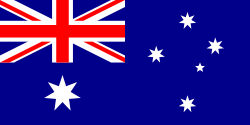 Australia: 3 September 1939
Australia: 3 September 1939 France: 3 September 1939 (capitulated on 25 June, 1940) , including:
France: 3 September 1939 (capitulated on 25 June, 1940) , including:
 French overseas territories
French overseas territories French Morocco
French Morocco
 New Zealand: 3 September 1939
New Zealand: 3 September 1939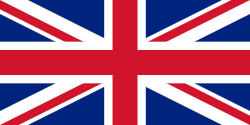 United Kingdom: 3 September 1939 , including:
United Kingdom: 3 September 1939 , including:
 Newfoundland: 4 September 1939
Newfoundland: 4 September 1939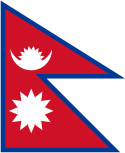 Nepal: 4 September 1939
Nepal: 4 September 1939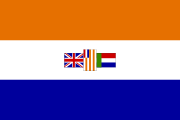 South Africa: 6 September 1939
South Africa: 6 September 1939 Canada: 10 September 1939
Canada: 10 September 1939 Czechoslovakia (government-in-exile): 2 October 1939
Czechoslovakia (government-in-exile): 2 October 1939
After the Phoney War
- Further information: Phoney War
 Norway: 9 April 1940 (attacked by Germany on 9 April 1940, signed Armed Forces Agreement with the UK on 28 May 1941)
Norway: 9 April 1940 (attacked by Germany on 9 April 1940, signed Armed Forces Agreement with the UK on 28 May 1941)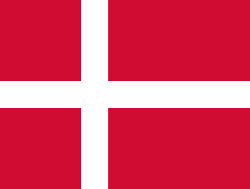 Denmark: 9 April 1940 (officially neutral under German occupation 9 April 1940 - 29 August 1943)
Denmark: 9 April 1940 (officially neutral under German occupation 9 April 1940 - 29 August 1943)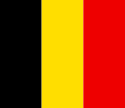 Belgium: 10 May 1940, including:
Belgium: 10 May 1940, including:
 Belgian Congo
Belgian Congo
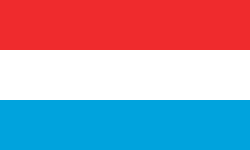 Luxembourg: 10 May 1940
Luxembourg: 10 May 1940 Netherlands: 10 May 1940, including:
Netherlands: 10 May 1940, including:
 Dutch East Indies
Dutch East Indies other Dutch colonies
other Dutch colonies
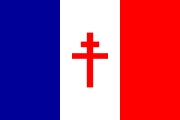 Free France: 18 June 1940
Free France: 18 June 1940 Greece: 28 October 1940
Greece: 28 October 1940 /
/ Yugoslavia: 6 April 1941 (signed partial Tripartite Pact on 25 March, attacked by Germany on 6 April after a coup)
Yugoslavia: 6 April 1941 (signed partial Tripartite Pact on 25 March, attacked by Germany on 6 April after a coup)
After the invasion of the USSR
- Further information: Operation Barbarossa
 Soviet Union: 22 June 1941 (cooperated with Axis during Invasion of Poland)
Soviet Union: 22 June 1941 (cooperated with Axis during Invasion of Poland)Tannu Tuva: 25 June 1941 (annexed by Soviet Union in 1944)
 Mongolia: 9 August 1941
Mongolia: 9 August 1941
After the attack on Pearl Harbor
- Further information: Attack on Pearl Harbor
 Panama: 7 December 1941
Panama: 7 December 1941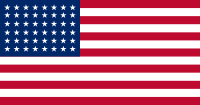 United States: 8 December 1941, including:
United States: 8 December 1941, including:
 American Samoa
American Samoa Guam (9 December 1941, locally)
Guam (9 December 1941, locally) Puerto Rico
Puerto Rico U.S. Virgin Islands
U.S. Virgin Islands other unincorporated territories
other unincorporated territories
 Costa Rica: 8 December 1941
Costa Rica: 8 December 1941 Dominican Republic: 8 December 1941
Dominican Republic: 8 December 1941 El Salvador: 8 December 1941
El Salvador: 8 December 1941 Haiti: 8 December 1941
Haiti: 8 December 1941 Honduras: 8 December 1941
Honduras: 8 December 1941 Nicaragua: 8 December 1941
Nicaragua: 8 December 1941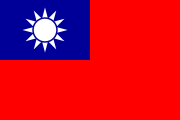 Republic of China : 9 December 1941 (at war with Empire of Japan since 1937)
Republic of China : 9 December 1941 (at war with Empire of Japan since 1937) Commonwealth of the Philippines 9 December 1941
Commonwealth of the Philippines 9 December 1941 Guatemala: 9 December 1941
Guatemala: 9 December 1941 Cuba: 9 December 1941
Cuba: 9 December 1941
After the Declaration by United Nations
 Mexico: 22 May 1942
Mexico: 22 May 1942 Brazil: 22 August 1942
Brazil: 22 August 1942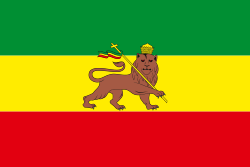 Ethiopia: 14 December 1942 (formerly occupied by Fascist Italy)
Ethiopia: 14 December 1942 (formerly occupied by Fascist Italy) Iraq: 17 January 1943 (occupied by Allies in 1941)
Iraq: 17 January 1943 (occupied by Allies in 1941) Bolivia: 7 April 1943
Bolivia: 7 April 1943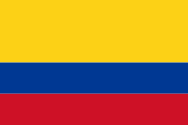 Colombia: 26 July 1943
Colombia: 26 July 1943 Iran: 9 September 1943 (occupied by Allies in 1941)
Iran: 9 September 1943 (occupied by Allies in 1941) Yugoslavia: 1 December 1943[5]
Yugoslavia: 1 December 1943[5] Liberia: 27 January 1944
Liberia: 27 January 1944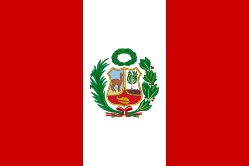 Peru: 12 February 1944
Peru: 12 February 1944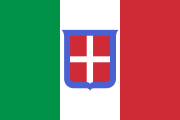 Italy: After the arrest of Mussolini in 1943, northern Italy was occupied by Nazi Germany while the south under the Italian King Victor Emmanuel III joined the Allies against the Axis.
Italy: After the arrest of Mussolini in 1943, northern Italy was occupied by Nazi Germany while the south under the Italian King Victor Emmanuel III joined the Allies against the Axis.
After Operation Bagration and D-Day
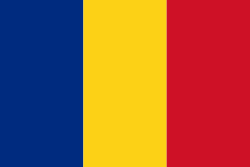 Romania: 23 August 1944 (formerly a member of the Axis)
Romania: 23 August 1944 (formerly a member of the Axis) Bulgaria: 8 September 1944 (formerly a member of the Axis)
Bulgaria: 8 September 1944 (formerly a member of the Axis) San Marino: 21 September 1944 (formerly a member of the Axis)
San Marino: 21 September 1944 (formerly a member of the Axis) Albania: 26 October 1944 (formerly occupied by Fascist Italy and later Nazi Germany)
Albania: 26 October 1944 (formerly occupied by Fascist Italy and later Nazi Germany) Bahawalpur: 2 February 1945
Bahawalpur: 2 February 1945 Ecuador: 2 February 1945 (But it was co-belligerent nation since 1943 to defend the Galapagos)
Ecuador: 2 February 1945 (But it was co-belligerent nation since 1943 to defend the Galapagos) Paraguay: 7 February 1945
Paraguay: 7 February 1945 Uruguay: 15 February 1945
Uruguay: 15 February 1945 Venezuela: 15 February 1945
Venezuela: 15 February 1945 Turkey: 23 February 1945
Turkey: 23 February 1945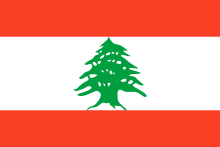 Lebanon: 27 February 1945
Lebanon: 27 February 1945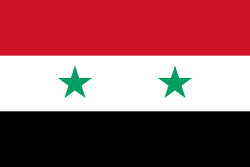 Syria: 27 February 1945
Syria: 27 February 1945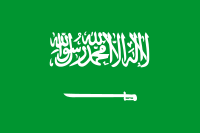 Saudi Arabia: 1 March 1945
Saudi Arabia: 1 March 1945 Argentina: 27 March 1945
Argentina: 27 March 1945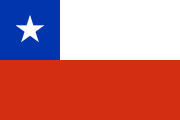 Chile: 11 April 1945
Chile: 11 April 1945
History
China
During the 1920s, the Kuomintang (KMT) government led by Generalissimo Chiang Kai-shek was aided by the Soviet Union, which helped to reorganise the party, superficially at least, along Leninist lines: a unification of party, state, and army. However, following the nominal unification of China in 1928, Chiang Kai-shek purged leftists from his party and fought against the Chinese Communist Party, former warlords, and other militarist factions. A fragmented China provided easy opportunities for Japan to gain territories piece by piece without engaging in total war. Following the 1931 Mukden Incident, the puppet state of Manchukuo was established. Throughout the early to mid 1930s, Chiang's anti-communist and anti-militarist campaigns continued while he fought small, incessant conflicts against Japan, usually followed by unfavorable settlements and concessions.
In the early 1930s, Germany and China became close partners in military and industrial matters. Nazi Germany provided the largest proportion of Chinese arms imports and technical expertise. Following the Marco Polo Bridge Incident of 7 July 1937, China and Japan became embroiled in a full-scale war which continued until 1945. Initially, Germany denounced Japanese war crimes in China, such as the Nanking Massacre of 1937. However Germany also recognised that Japan would be a more capable ally against the Soviet Union and broke off the cooperation with China in May 1938. The Soviet Union, wishing to keep China in the fight against Japan, supplied China with some military assistance until 1941, until it made peace with Japan to prepare for the war against Germany.
Even though China had been fighting the longest among all the Allied powers, it only officially joined the Allies after the attack on Pearl Harbor, on 7 December 1941. Chiang Kai-shek felt Allied victory was assured with the entrance of the United States into the war, and he declared war on Germany and the other Axis nations. However, Allied aid remained low because the Burma Road was closed and the Allies suffered a series of military defeats against Japan early on in the campaign. The bulk of military aid did not arrive until the spring of 1945. More than 1.5 million Japanese troops were trapped in the China Theatre; troops that otherwise could have been deployed elsewhere had China collapsed and made a separate peace with Japan.
Key alliances are formed
On the day 1 September 1939, the German invasion of Poland began World War II. The United Kingdom and France declared war on Germany on the third of September. The British declaration also covered the Indian Empire and other states which were British Crown Colonies at the time.
Following the Statute of Westminster in 1931, the Dominions of the British Commonwealth had independence in foreign policy. Australia and New Zealand accepted and reiterated the British declaration. Nepal, another independent Kingdom, declared war against imperialism on 4 September. The South African Prime Minister, Barry Hertzog, refused to declare war, leading to the collapse of his coalition government on 6 September; the new Prime Minister, Jan Smuts, declared war that same day. Canada declared war on Germany on 10 September; this was necessary as Canada had ratified the Statute of Westminster.
On 17 September, USSR invaded Poland from the East, and on 30 November, the Soviet Union attacked Finland. The following year the USSR annexed the Baltic states — Estonia, Latvia, and Lithuania — together with parts of Romania. The German-Soviet agreement was brought to an end by the German invasion of the USSR on 22 June 1941.
The United States of America joined the Allies following the attack on Pearl Harbor, on 7 December 1941. The Declaration by United Nations, on 1 January 1942, officially united 26 nations as Allies. The informal Big 3 alliance of the United Kingdom, the Soviet Union, and the United States emerged in the later half of the war, and their decisions determined Allied strategy around the world.
Formal alliances during the war
Original Allies
The original Allies were those states that declared war on Nazi Germany following the German invasion of Poland in September 1939.
These countries were allied to each other by a net of common defence pacts and military alliance pacts signed before the war. The Franco-British Alliance dated back to the Entente Cordiale of 1904 and the Triple Entente of 1907, active during the World War I. The Franco-Polish Alliance was signed in 1921 and then amended in 1927 and 1939. The Polish-British Common Defence Pact, signed on 25 August 1939, contained promises of mutual military assistance between the nations in the event either was attacked by Nazi Germany.
Poland
The invasion of Poland started the war in Europe. Poland fielded the third biggest army among the European Allies, after the Soviet Union and Great Britain, but before France. The country never officially surrendered to the Third Reich and continued the war effort under the Polish government in exile. Home Army, the biggest underground force in Europe, outside the Soviet Union, and other resistance organizations in occupied Poland provided intelligence that enabled successful operations later in the war and lead to uncovering the Nazi war crimes (ie. death camps) to the Western Allies. Notable Polish units fought in every campaign in Europe and North Africa (outside the Balkans). Polish Armed Forces in the West were created in France and, after its fall, in the United Kingdom. The Soviet Union recognized the London-based government but broke diplomatic relations after the revelation of the Katyn massacre, and in 1943 organized the Polish People's Army under Zygmunt Berling, around which it constructed the post-war successor state People's Republic of Poland. The Polish People's Army took part in the Battle of Berlin, the closing act of the European theater of war.
British Commonwealth/British Empire
The United Kingdom and territories controlled by the Colonial Office (the Crown Colonies) and the British Indian Empire[7] were controlled politically by Britain and therefore also entered hostilities with Britain's declaration of war.
Apart from these were the independent members of the British Commonwealth — the official name in 1926-49 — known as the Dominions. These declared war on Germany separately, either on the same day, or soon afterwards. These countries were: Australia, Canada, New Zealand and South Africa. Newfoundland had given up self-rule and was at the time under effective rule from the UK; it did not become part of Canada until 1949.
The British Indian Empire contributed about 2,500,000 personnel. It suffered 1,500,000 civilian casualties (more than the United Kingdom) 87,000 military casualties (more than any Commonwealth country but less than the United Kingdom).
France
France experienced several major phases of action during World War II:
- The "Phoney War" of 1939–1940, also called drôle de guerre in France, dziwna wojna in Poland (both meaning "Strange War"), or the "Sitzkrieg" ("Sitting War") in Germany.
- The Battle of France in May–June 1940, which resulted in the defeat of the French Army, the fall of the French Third Republic and the creation of the rump state Vichy France.
- The period of French Resistance and Free French Forces, from 1940–1944, until the June 1944 D-Day invasions part of the Battle of Normandy and the August 1944 invasion of southern France in Operation Dragoon, which led to the Liberation of Paris on 25 August 1944 and the liberation of France by the allies.
- The political creation of the Provisional Government of the French Republic, and the military actions following the redesignation of "French Army B" as the First French Army, including the final drive on Germany, which culminated in V-E Day, on 7 May 1945.
Oslo Group
The Oslo Group was an organisation of officially neutral countries. Four members later joined the Allies, as governments in exile: the Kingdom of Norway, the Kingdom of the Netherlands, the Kingdom of Belgium and the Grand Duchy of Luxembourg.
The Republic of Finland was attacked by the USSR on 30 November 1939.[8] Later Finland and the Kingdom of Denmark officially joined the Axis Anti-Comintern Pact. The Kingdom of Sweden remained officially neutral. Following the Moscow armistice of September 1944, Finland effectively joined the Allies and expelled German forces. This led to a series of armed clashes called the Lapland War.
Denmark was invaded by Germany on 9 April 1940. The Danish government did not declare war and it surrendered the same day, on the understanding that it retain control of domestic affairs. No government-in-exile was formed. Danes fought with both Allied and Axis forces. Iceland, Faroe Islands and Greenland, which were respectively in union with Denmark and a Danish colony, were occupied by the Allies for most of the war. British forces took control in Iceland on 10 May 1940, and it was used to facilitate the movement of Lend Lease equipment. Forces from the United States, although they were officially neutral at the time, occupied Greenland on 9 April 1941. The U.S. also took over in Iceland on 7 July 1941. Iceland declared full independence from Denmark in 1944 but never declared war on any of the Axis powers.
Portuguese Case
Although Portugal remained officially neutral, and the Salazar Dictatorship admired Fascist regimes, there was the Anglo-Portuguese Alliance — the world's oldest military alliance (1373) — reactivated by the United Kingdom during World War II, leading to the establishment of an Anglo-American base in Lajes, Terceira Island, Azores, which Salazar finally accepted (December 1943), though he was not in position to refuse anyway. Since 1940, both Churchill and Roosevelt were facing the possibility of a preventive occupation of Azores.[9] Portugal also protested the occupation of Portuguese Timor by Allied forces in 1942 but did not actively resist. The colony was subsequently occupied by Japan. Timorese and Portuguese civilians assisted Australian commandos in resisting the Japanese. Portuguese Macau was also occupied by Japan.
Pan American Union
The members of the Pan American Union, who were all neutral in 1939-41, formed a mutual defense pact at a conference of foreign ministers at Havana, on 21 July 1940 – 30 July 1940. The "Declaration on Reciprocal Assistance and Cooperation for the Defense of the Nations of the Americas" was part of the Final Act of the Second Meeting of the Ministers of Foreign Affairs of the American Republics at Havana, Cuba, July 30, 1940.[10] There were 21 signatories:
 Bolivia
Bolivia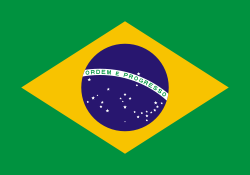 Brazil
Brazil Chile
Chile Colombia
Colombia Costa Rica
Costa Rica Cuba
Cuba Dominican Republic
Dominican Republic El Salvador
El Salvador Guatemala
Guatemala Haiti
Haiti Honduras
Honduras Mexico
Mexico Nicaragua
Nicaragua Panama
Panama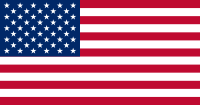 United States of America
United States of America
From this group, 3 countries participated in the War taking military actions against the Nations of Axis Powers:
- USA, as one of the Big Three, the leader group of Allies Nations ( at the side of the British empire - which was led by United Kingdom - and the then USSR ) played the major role in defeat and surrender of Japan as well as a decisive ones in defeat of Fascist Italy and Nazi Germany;
- Brazil, beyond its Navy participation in the anti-submarine warfare against Italians and Germans' U-Boats in South and Central Atlantic from 1942; sent in July 1944 a Expeditionary Force of 25,000 personnel ( Army and Air Force ) to join the Allies Forces in Italian campaign and
- Mexico, which sent in March 1945 the Mexican Air Force's Escuadrón 201 to join the U.S. Far East Air Force, during the Philippines campaign.
The other 18 countries from this group contributed given support in many ways on lesser degrees or limited to war declaration.
Comintern
The following socialist and pro-Soviet forces fought against the Axis powers before or during the Second World War:
- Popular Front
 Spain - International Brigades
Spain - International Brigades Albania - Albanian National Liberation Army
Albania - Albanian National Liberation Army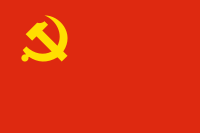 Chinese Red Army (a.k.a 8th Route Army; ROC 18th Army or; New Fourth Army)
Chinese Red Army (a.k.a 8th Route Army; ROC 18th Army or; New Fourth Army) Greece - Greek National Liberation Front
Greece - Greek National Liberation Front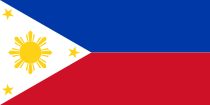 Philippines - Hukbalahap (Philippines)
Philippines - Hukbalahap (Philippines) Malaya - Malayan Communist Party
Malaya - Malayan Communist Party Mongolia - Mongolian Peoples Party
Mongolia - Mongolian Peoples Party Poland - Ludowe Wojsko Polskie (Polish People's Army)
Poland - Ludowe Wojsko Polskie (Polish People's Army)Tuvinian People's Republic
 Union of Soviet Socialist Republics
Union of Soviet Socialist Republics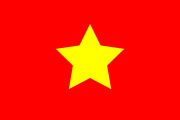 Vietnam - Viet Minh
Vietnam - Viet Minh Yugoslavia
Yugoslavia
Atlantic Charter
The Atlantic Charter was negotiated at the Atlantic Conference by British Prime Minister Winston Churchill and U.S. President Franklin D. Roosevelt, aboard warships in a secure anchorage at NS Argentia, Newfoundland (located on Placentia Bay) and was issued as a joint declaration on 14 August 1941.
The Atlantic Charter established a vision for a post-World War II world, despite the fact the United States had yet to enter the war.
In brief, the nine points were:
- no territorial gains sought by the United States or the United Kingdom;
- territorial adjustments must be in accord with wishes of the people;
- the right to self-determination of peoples;
- trade barriers lowered;
- global economic cooperation and advancement of social welfare;
- freedom from want and fear;
- freedom of the seas;
- disarmament of aggressor nations, postwar common disarmament;
- defeat of Germany and other Axis powers.
The Atlantic Charter proved to be one of the first steps towards the formation of the United Nations.
United Nations
Declaration by United Nations

The alliance was formalised in the Declaration by United Nations on 1 January 1942. There were 27 signatories, as follows:
|
Later in 1942, Mexico, The Philippines and Ethiopia adhered to the declaration. During 1943, it was signed by Iraq, Iran, Brazil, Bolivia and Colombia. In 1944, Liberia and France signed . During the early part of 1945, Peru, Chile, Paraguay, Venezuela, Uruguay, Turkey, Egypt, Saudi Arabia, Lebanon, Syria and Ecuador became signatories.
Charter of the United Nations
The Charter of the United Nations was agreed to during the war at the United Nations Conference on International Organization, held between April and July 1945. The Charter was signed by 50 nations on 26 June (Poland had its place reserved and later became the 51st "original" signatory), and was formally ratified shortly after the war on 24 October 1945. The five leading Allied nations, namely China, France, the Soviet Union, the United Kingdom, and the United States met repeatedly during the war, such as at the 1944 conference at Dumbarton Oaks where the formation and permanent seats of the United Nations Security Council were decided. The Security Council met for the first time in the immediate aftermath of war on 17 January 1946.[11]

These are the original 51 signatories (Security Council Permanent members are asterisked).:
Iran
On 29 January 1946, the United Kingdom and the Soviet Union agreed to end their occupation of Iran, six months after the end of the war. The Tripartite Treaty of Alliance also formalised Iran's assistance to the Allies.[12]
See also
- Participants in World War II
Footnotes
- ↑ Polish veterans to take pride of place in victory parade, Financial Times, 2005-07-05. Access date: 2008-05-02.
- ↑ Hakim, Joy (1995). A History of Us: War, Peace and all that Jazz. New York: Oxford University Press. ISBN 0-19-509514-6.
- ↑ Douglas Brinkley, FDR & the Making of the U.N.
- ↑ Churchill, Winston S. (1981) [1953]. The Second World War, Volume VI: Triumph and Tragedy. Houghton-Mifflin Company. p. 561.
- ↑ Democratic Federal Yugoslavia was founded on 29 November 1943, by the Yugoslav Partisans, who were recognised as an Ally at the Tehran Conference.
- ↑ effectively the British Empire but excluding the Dominions.
- ↑ including the areas covered by the later Republic of India, Pakistan and Bangladesh
- ↑ LEAGUE OF NATIONS' EXPULSION OF THE U.S.S.R., DECEMBER 14, 1939
- ↑ Kenneth G. Weiss, The Azores in Diplomacy and Strategy, 1940-1945, Center for Naval Analyses, 1980, Alexandria, VA
- ↑ http://www.yale.edu/lawweb/avalon/decade/decad058.htm
- ↑ United Nations Security Council: Official Records: First Year, First Series, First Meeting
- ↑ http://www.army.mil/cmh-pg/books/wwii/persian/chapter01.htm#b2
External links
- Changing Alliances In the International Arena
- The Atlantic Conference: Resolution of September 24, 1941
|
||||||||||||||||||||||||||||||||||||||||||||||||||||||||